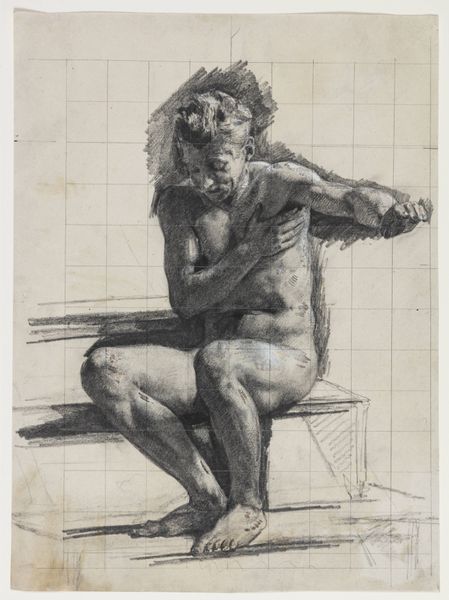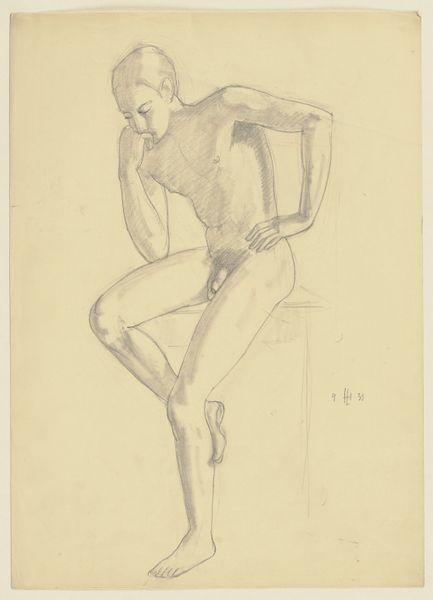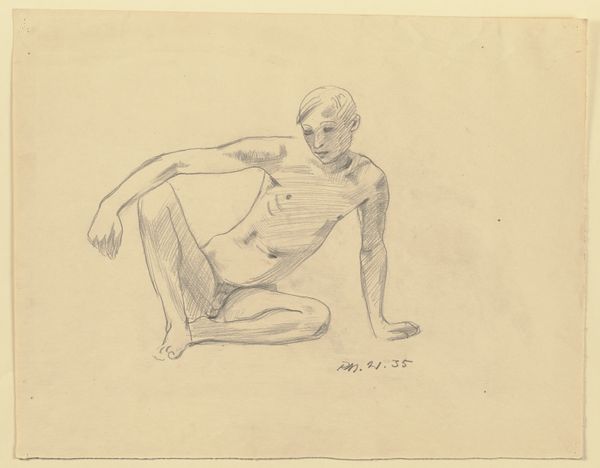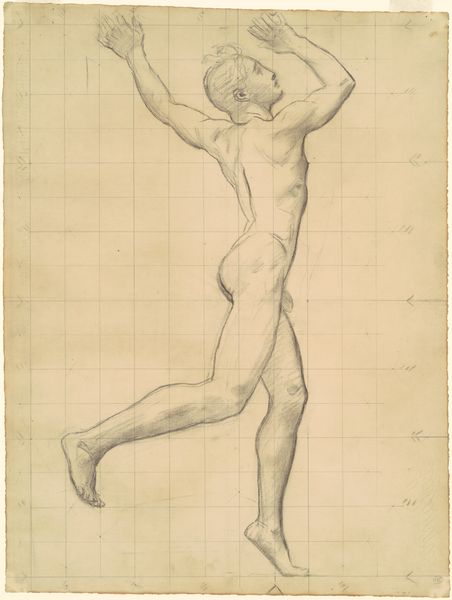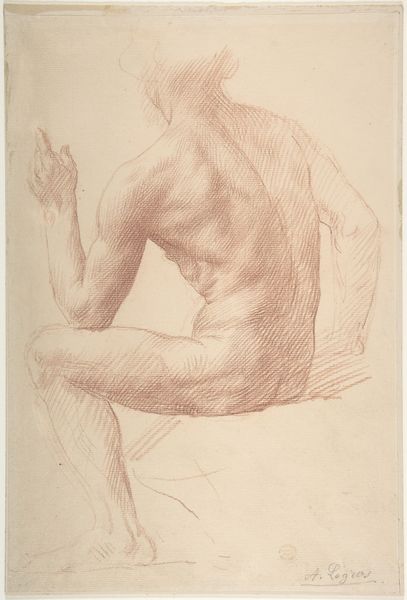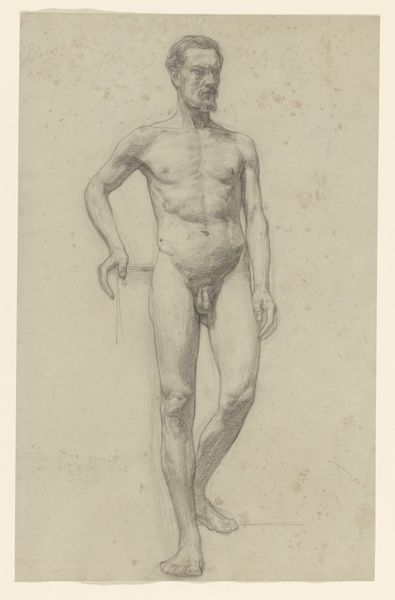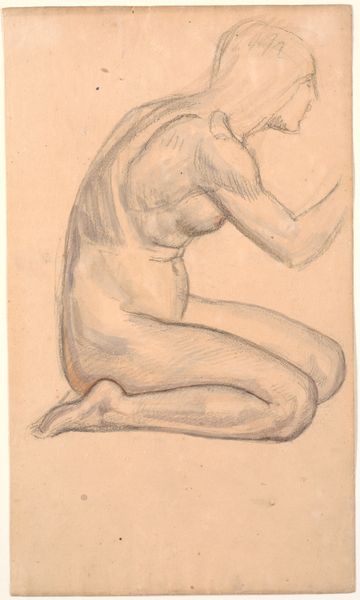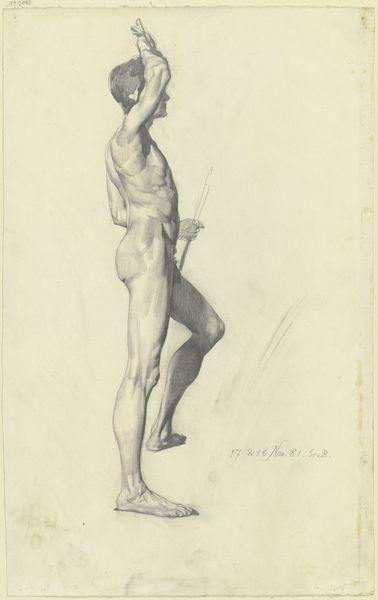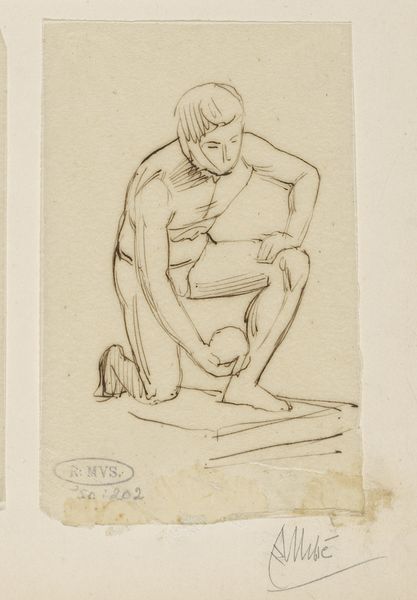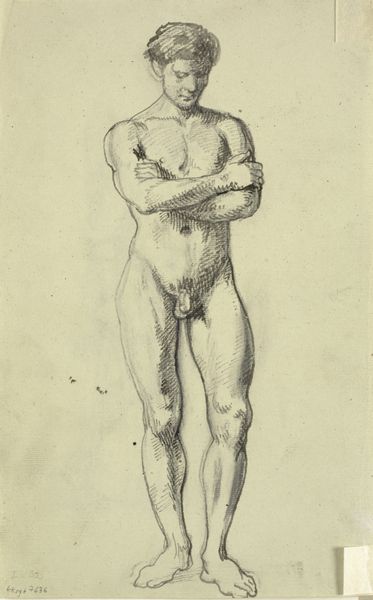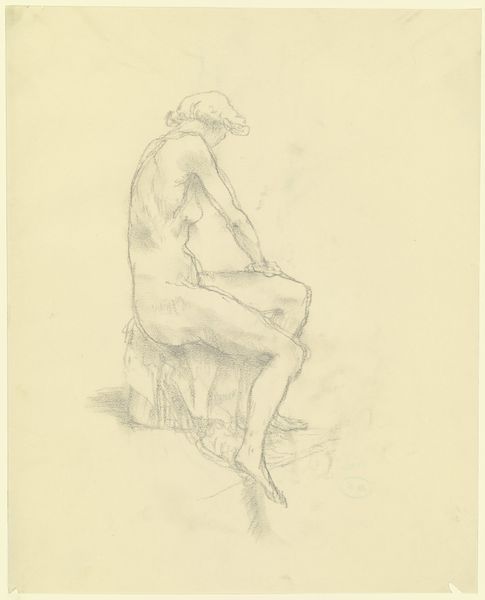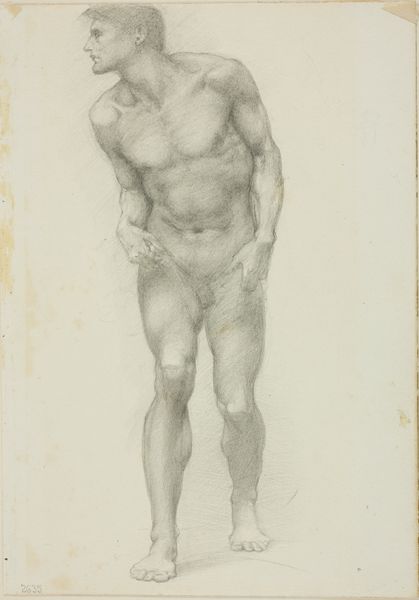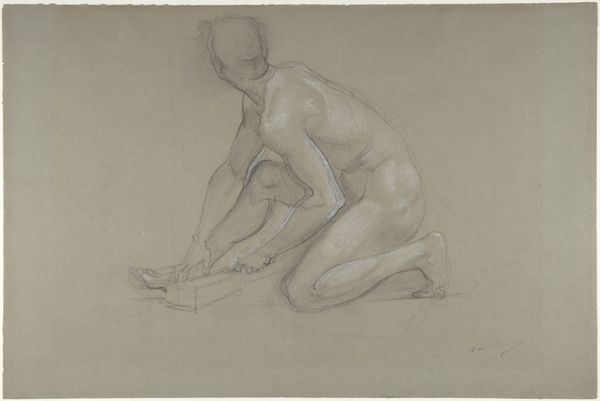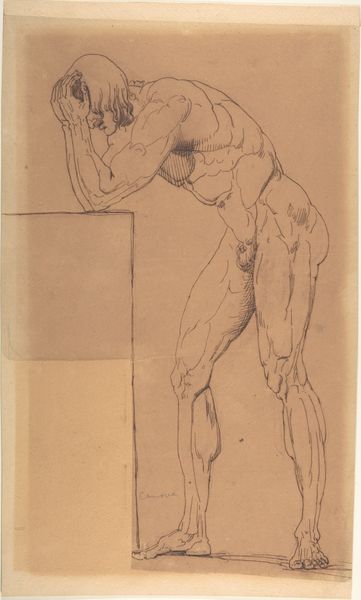
drawing, pencil
#
drawing
#
classical-realism
#
form
#
pencil drawing
#
pencil
#
line
#
academic-art
#
nude
#
realism
Dimensions: sheet: 40.5 × 28.1 cm (15 15/16 × 11 1/16 in.)
Copyright: National Gallery of Art: CC0 1.0
Curator: Here we have Kenyon Cox's "Seated Male Nude: Study for 'Science' - Iowa State Capitol," created in 1905 using pencil on paper. Editor: Immediately, I'm struck by the mood. It feels…contemplative, almost burdened. The way the figure is hunched over, hand supporting his head… there's a definite weight to it. Curator: Precisely. Note the use of the grid, visible beneath the figure. It provides a structural framework, almost like a cage, and helps establish the precise proportions of the human form. Observe also the delicate cross-hatching used to define the musculature. Editor: That grid, as you mentioned, is interesting. Does it refer to something? Maybe a philosophical or societal structure constraining free thought? Curator: It more likely reflects Cox’s academic approach. It’s a tool for accurate representation, rooted in classical ideals. See how each muscle is rendered with precise attention to light and shadow? Editor: Yes, but it transcends mere anatomical study, don't you think? The nude male figure has often served as an allegory of virtue, intellect, and the heroic ideal. Curator: Yes, indeed. But let's not ignore the pure artistry. Consider the texture achieved through varying pencil strokes. It brings a certain sensuality to the otherwise austere classical form. The use of line here is so deliberate. Editor: It's compelling how this image invites us to consider enduring questions around science and the human condition. Does progress always come at a cost? Curator: Or, perhaps more optimistically, is human intellect destined to solve its predicaments, to rise above them through careful calculation and artful application of knowledge? Editor: Ultimately, this work becomes a springboard for broader inquiries into humanity’s relationship with the world and itself. Curator: Indeed, its formal clarity belies the ambiguity of the human quest for knowledge.
Comments
No comments
Be the first to comment and join the conversation on the ultimate creative platform.
